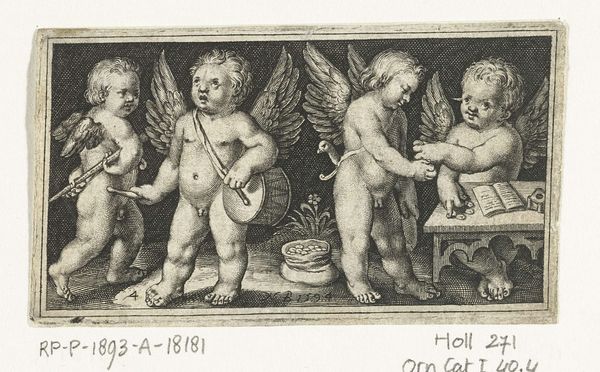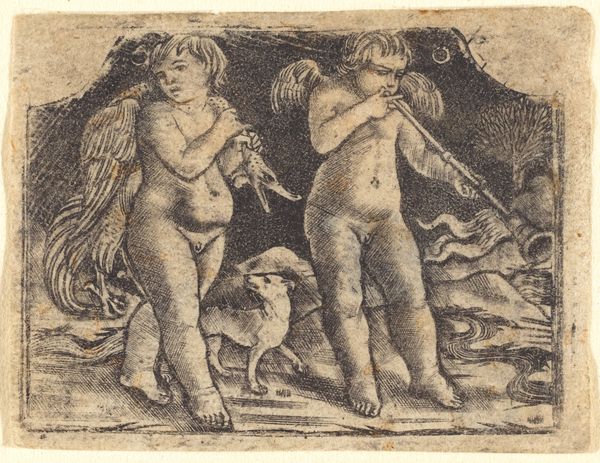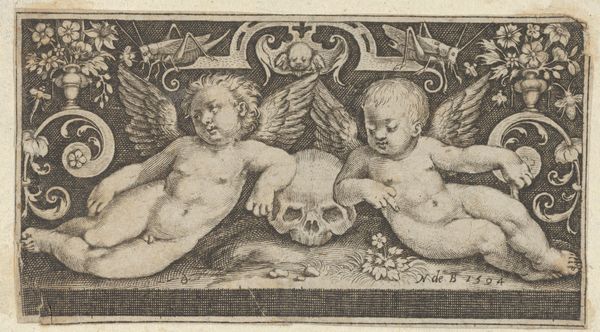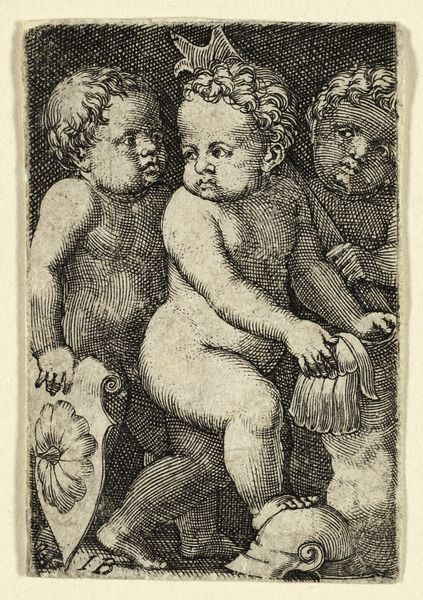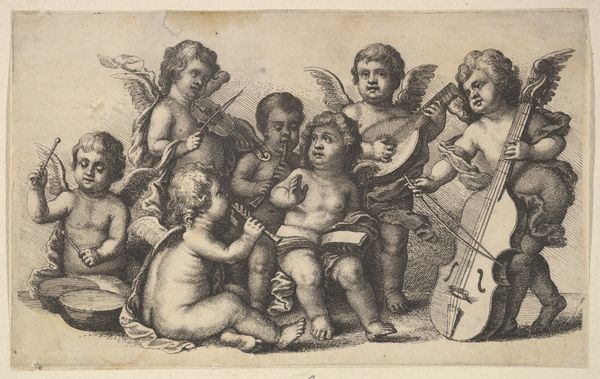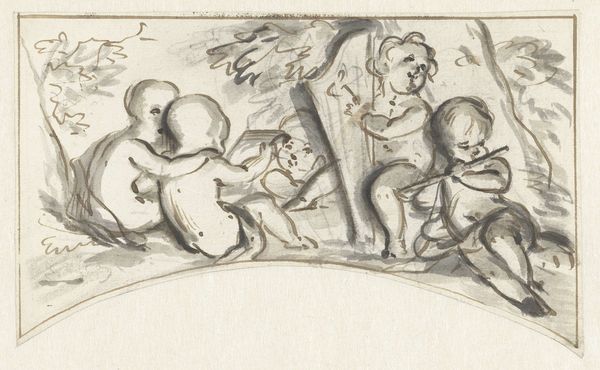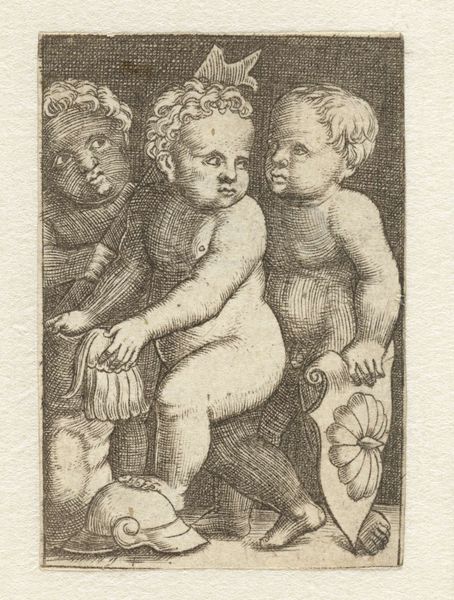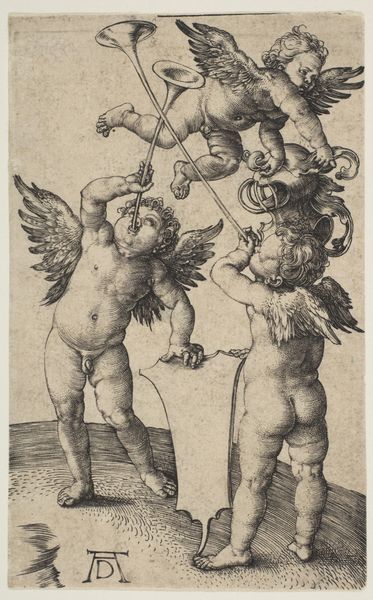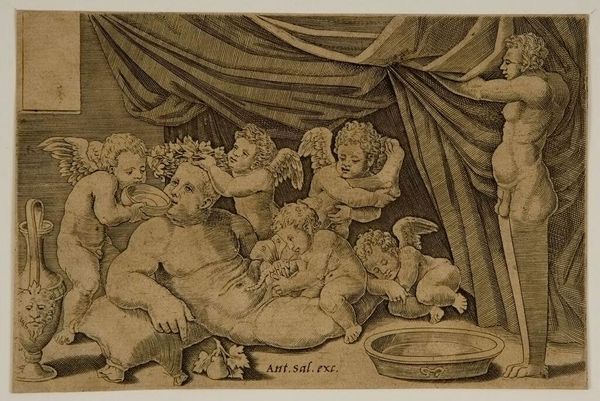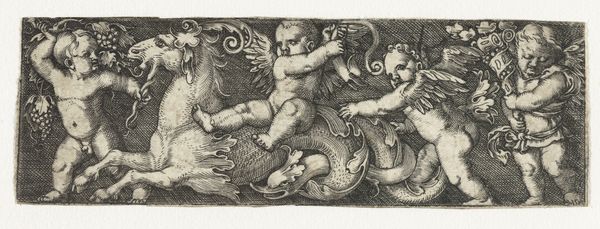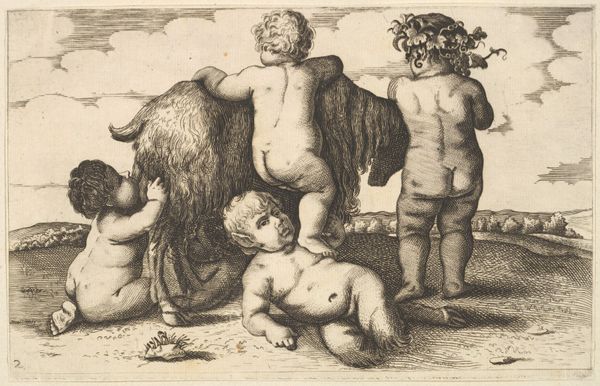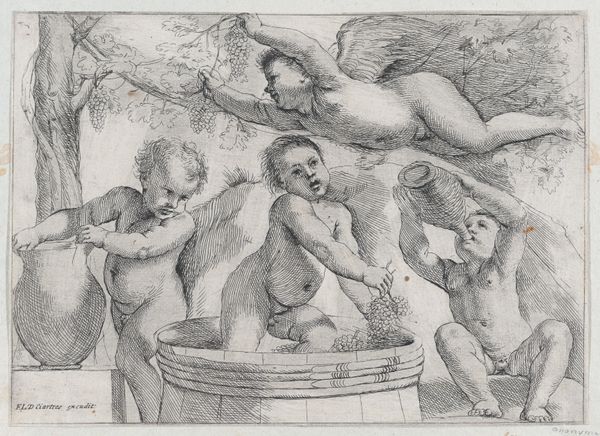
Twee engeltjes tellen geld en twee engeltjes met rommel en fluit 1594
0:00
0:00
print, engraving
#
allegory
# print
#
figuration
#
11_renaissance
#
northern-renaissance
#
engraving
Dimensions: height 44 mm, width 82 mm
Copyright: Rijks Museum: Open Domain
Nicolaes de Bruyn created this print, “Two Cupids Counting Money, and Two with a Drum and Flute,” sometime around 1600 in the Netherlands. At the time, the Dutch Republic was emerging as a major center of trade and finance. De Bruyn's engraving reflects the anxieties of an increasingly commercial society. On the one hand, we see cupids engaged in music and play, evoking traditional associations with love, leisure, and the arts. On the other, we see them studiously counting coins and keeping accounts. The image can be understood as a commentary on the shifting values of the time. The rising merchant class placed new emphasis on wealth and material success. To understand this image better, it helps to know about the economic history of the Dutch Republic. Archival sources, such as merchant records and municipal accounts, can shed light on how economic changes impacted cultural values. The interpretation of art is always contingent on social and institutional context.
Comments
No comments
Be the first to comment and join the conversation on the ultimate creative platform.
